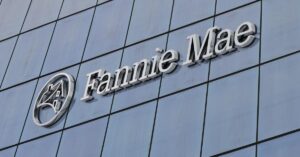June delivered another mixed outlook for the U.S. employment picture, with the economy adding the fewest number of jobs since December 2020 but wage growth coming in stronger than expected.
Total nonfarm payroll employment grew by 209,000 positions in June, the U.S. Bureau of Labor Statistics (BLS) reported. Economists polled by Reuters predicted an addition of 225,000 jobs for the month, while Bloomberg’s consensus pinned the increase at 230,000. It was the first time in 15 months the actual figure underperformed either estimate. And while June’s gain is a healthy figure by historical standards, the cooling of new job additions suggests that resilience of the labor market may be near an end.
Downward revisions to April and May jobs data, which were trimmed by a combined 110,000 additions, brought the three-month average of job increases down to 244,000 and provided further proof that labor strength is softening. For the first half of the year, job growth averaged 278,000 positions per month.
Government hiring remained strong at 60,000 job additions in June, but in the private sector, the increase of 149,000 jobs was the lightest since December 2020. Construction and health care saw solid growth at 23,000 and 41,000 jobs, respectively, but other sectors (particularly goods-oriented segments like retail and logistics) saw decreases in June. Retail had an 11,000-job drop, while transportation and warehousing posted a backtrack of 7,000.
Labor participation held steady at 62.6%, while the unemployment rate took a step back from 3.7% in May — its highest figure in seven months — to 3.6%. Notably, that’s where the jobless rate stood in March 2022 when the Federal Reserve first began its hawkish rate-hike policy.
Wage growth, meanwhile, which had shown signs of a cooldown over the past few months, posted a rebound in June. Average annual earnings rose 0.4% from May. June’s annual wage increase was 4.4%, still too high to support the Fed’s target inflation range of 2%.
That’s key for Fed watchers, who saw the central bank pull back on rate hikes for the first time in nearly a year but remain wary after Fed Chair Jerome Powell suggested that more hikes are likely on the way. June’s jobs report does little to dispel that notion as the labor market, especially with respect to earnings growth, is still fueling consumer demand across the economy. After June’s employment report was published by the BLS, The New York Times, CNN, Wells Fargo and other outlets predicted a benchmark rate increase of 25 basis points at the Fed’s next meeting at the end of July.





